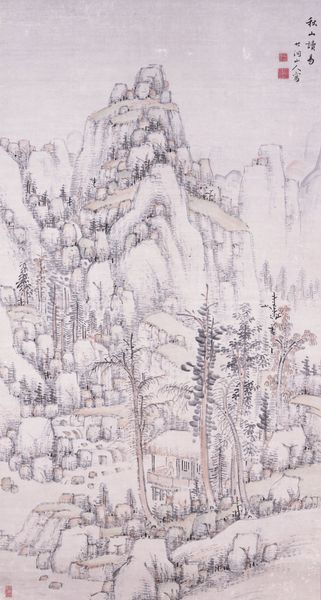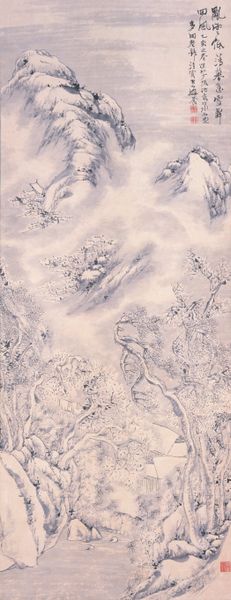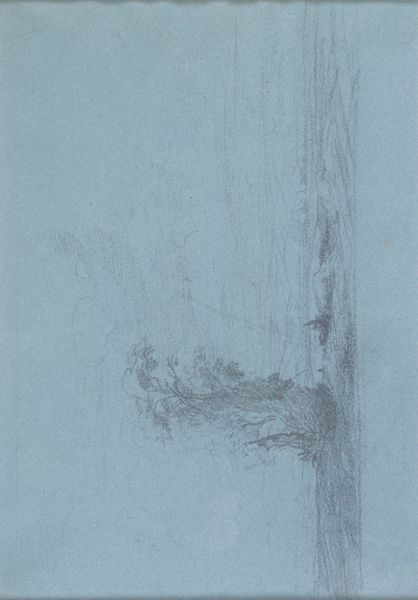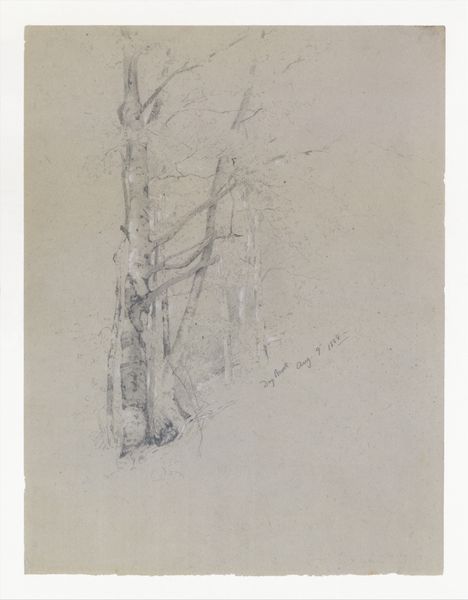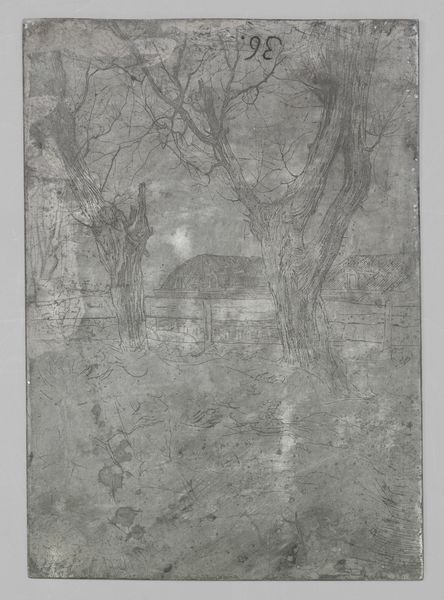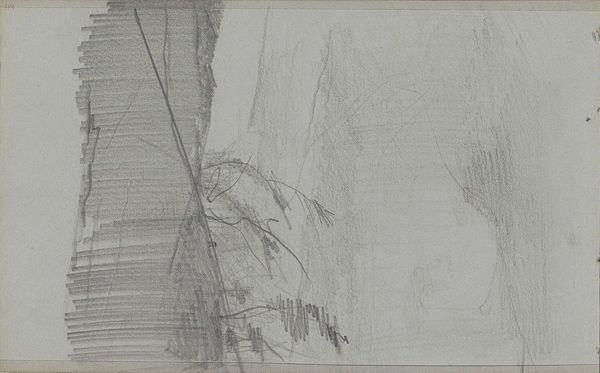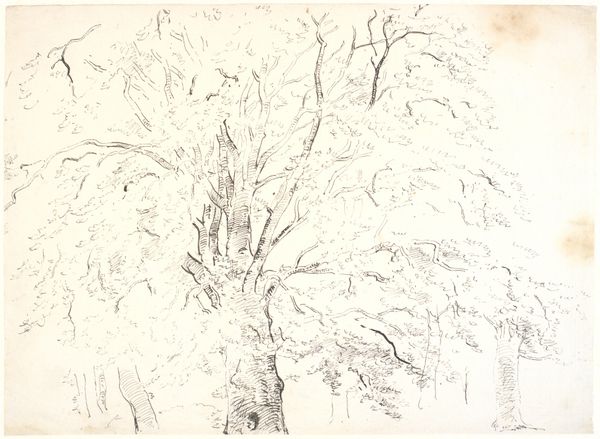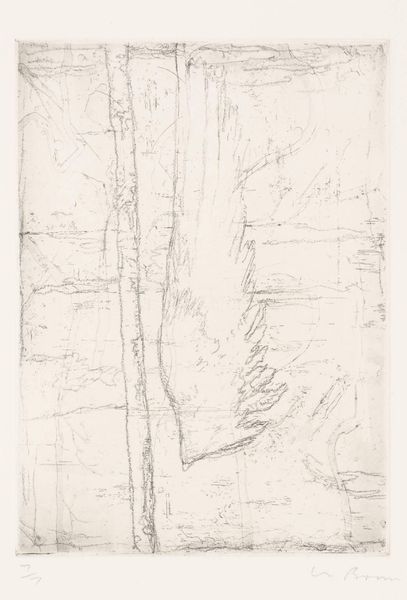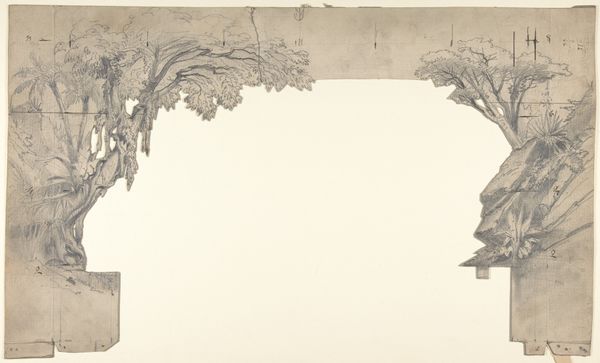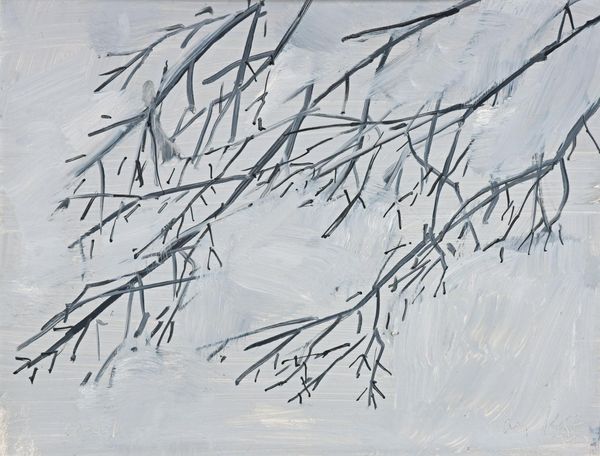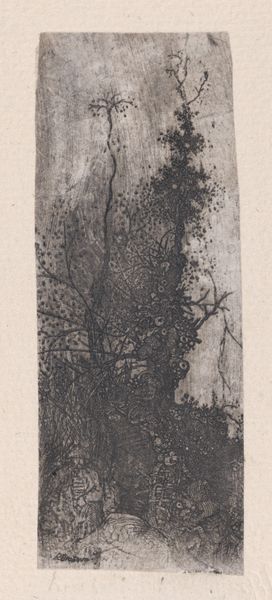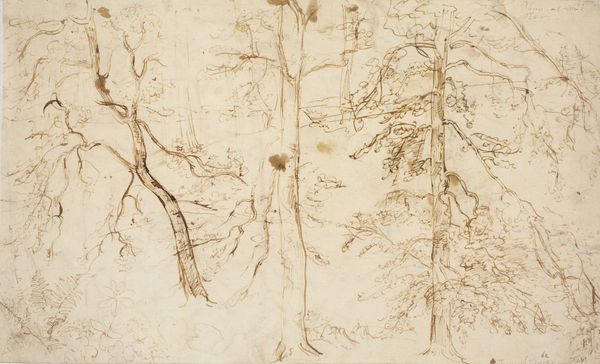
Winter Landscape in the Manner of Ni Zan Possibly 1833 - 1834
0:00
0:00
hanging-scroll
#
amateur sketch
#
light pencil work
#
pencil sketch
#
incomplete sketchy
#
hand drawn type
#
japan
#
hanging-scroll
#
sketchwork
#
pen-ink sketch
#
rough sketch
#
fantasy sketch
#
calligraphy
#
initial sketch
Dimensions: 53 1/8 × 22 13/16 in. (134.94 × 57.94 cm) (image)79 9/16 × 25 5/8 in. (202.09 × 65.09 cm) (mount, without roller)
Copyright: Public Domain
Curator: This piece whispers quietude. It’s Nakabayashi Chikuto’s “Winter Landscape in the Manner of Ni Zan,” possibly from 1833 or 1834. Currently hanging as a scroll here at the Minneapolis Institute of Art, it feels… spectral. Editor: Spectral is the word. All pale ink and thin, reedy trees. It's the sort of image where you feel like the world's holding its breath, bracing for something. A heavy snowfall perhaps? There’s a delicate emptiness, too, with the bare branches. Curator: I see that emptiness as loaded, pregnant with meaning. The choice to emulate Ni Zan—a Yuan dynasty artist known for his sparse landscapes, especially the blankness—Chikuto signals his aesthetic intentions. Ni Zan rejected serving the Yuan government and lived as a recluse painter. His stark scenes were not mere topography, but an embodiment of Daoist detachment. Editor: So Chikuto’s referencing all that history, the reclusive ideal, the quiet resistance? And with what result, a whisper on paper? Tell me more, what materials did he use? Curator: The original, the Ni Zan works were ink on paper and the hanging scrolls were mostly watercolors or colored pencil works that are also made of paper or silk, but Chikutō used light pencil work, which contributes to that sketchy unfinished mood we picked up on so swiftly. Editor: That almost ghostly rendering? Yes, the very quality that makes it so haunting! Though this sketchy style, it reminds me of amateur sketching. What message are we conveying if its appeal stems from this loose rendering? Curator: I think it gives us insight into a world of private reflections on the past rather than showy virtuosity or direct engagement in any kind of contemporary cultural issues, maybe? It speaks to the idea of emulating great masters not just as technical exercises, but as acts of cultural memory. It reminds us of the way artists used styles to think about legacy and artistic identity itself. Editor: Memory indeed. Well, I see now a whole story packed into this frosty sketch. More than first meets the eye! Curator: I agree. It has prompted new understanding that now helps enrich the viewing.
Comments
No comments
Be the first to comment and join the conversation on the ultimate creative platform.
